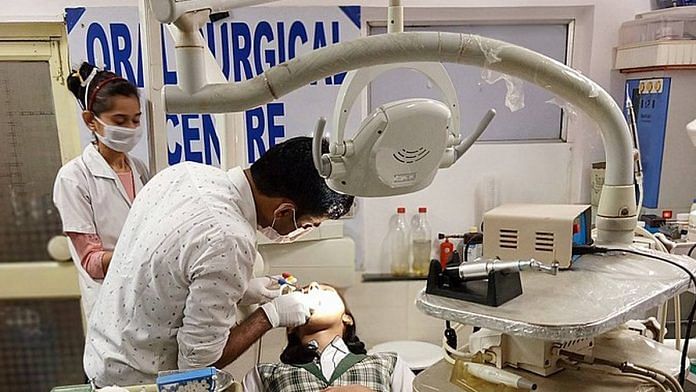Almost 3.5 million people worldwide suffer from oral diseases, including cavities, gingivitis and periodontal disease — a troubling statistic when you consider the proven connection between oral health and overall health and well-being. In the US alone, 47.2% of adults aged 30 years and older have some form of periodontal disease. While this may seem overwhelming, it is even more troubling when we consider how chronic oral conditions disproportionately affect underserved populations, including children, the elderly, Black, Indigenous and people of colour (BIPOC), people living with a disability and those on a low income.
The significant health inequity around the world persists in large part due to barriers in dental treatment, meaning that often preventable oral health issues become severe for people and communities that are underserved, affecting various aspects of their daily lives and their ability to access a healthier future. And it’s not only adults who are affected by this inequity — children may also experience significant physical, emotional, social and economic distress due to poor oral health.
This hurts communities around the globe; in 2015, oral diseases and conditions accounted for an estimated $357 billion in direct costs (such as treatment expenditures) and $188 billion in indirect costs (such as productivity losses due to absence from work or school), with large differences between high-, middle- and low-income countries.
So, why do these issues persist?
Barriers to equitable oral healthcare
Barriers to dental treatment exist for a number of reasons, ranging from high cost to geographic isolation to fear and anxiety and other social and economic factors. Studies have shown that high out-of-pocket payments associated with oral healthcare often lead people to not seek care when needed. This leads to economic and job-related issues — nearly 29% of low-income, working-age adults in the US report that the appearance of their mouths and teeth affects their ability to interview for a job.
Another major issue is the significant lack of diversity in healthcare professions, such as dentistry. In 2016, for example, only 15.2% of applicants to dental school were from underrepresented minorities. This creates issues with provider and patient care, as research shows that when patients don’t see people like themselves reflected in their providers, or when their providers have little understanding of their identities or experiences, they may feel excluded or unable to get the care they seek.
Additionally, issues related to doctor-patient communications, including cultural and linguistic competency of care providers and the health literacy and health beliefs of patients, can create a barrier to access for communities that are underserved. A study among the Hispanic population reported that it was very important to Hispanics to have a physician who speaks Spanish and fully understands Hispanic cultural values.
A brighter future starts with a brighter smile
Understanding the issues behind oral health inequity is important, but it’s not enough to affect change. It’s crucial that governments, businesses and leaders understand oral health inequity and take action. Businesses and governments can create more equitable oral health access by implementing better oral health programmes and policies. This may include:
• Ensuring that all communities improve their oral health literacy. At Colgate-Palmolive, we are bridging the oral health care gap by improving oral health literacy through our KnowYourOQ initiative, as well as providing behaviour change programming through our Bright Smiles, Bright Futures® programme.
• Engaging healthcare professionals on the importance of oral health. We are especially focused on bringing nurses into the conversation by expanding training on the importance of whole-body care.
• Initiating global and local partnerships to improve diversity in the healthcare workforce, inform health policy guidelines and address the socio-economic impacts of poor oral health.
• Leveraging next-generation technology and research to address the significant impacts of poor oral health on communities, such as people with disabilities, to ensure a healthier future for all.
For members of the World Economic Forum, please reach out to ty.greene@weforum.org to learn more about the Global Health Equity Network’s first-ever Oral Health Affinity Group. This brings together private and public sector leaders to ensure recognition of oral health needs in the global health agenda and centres oral health action within the Sustainable Development Goals.



